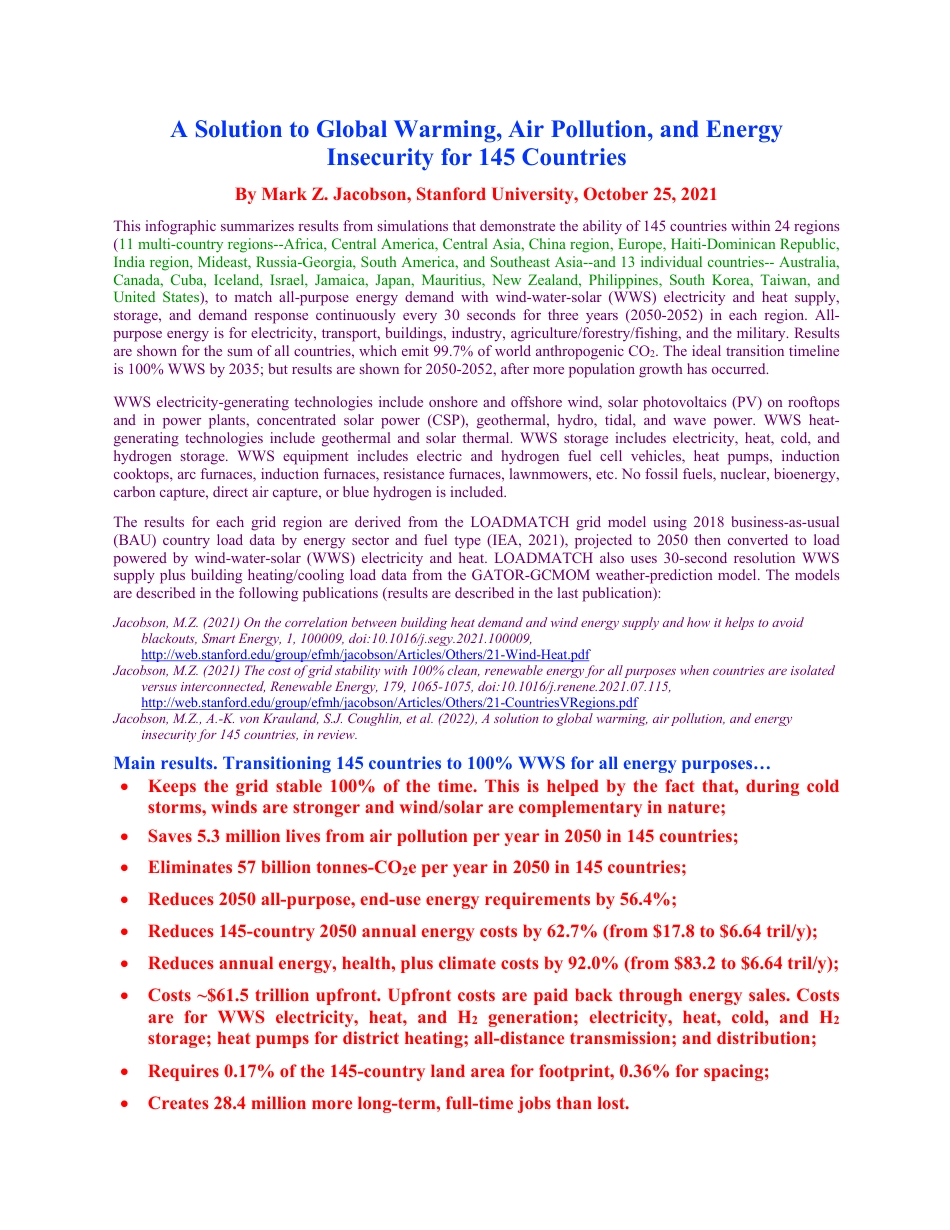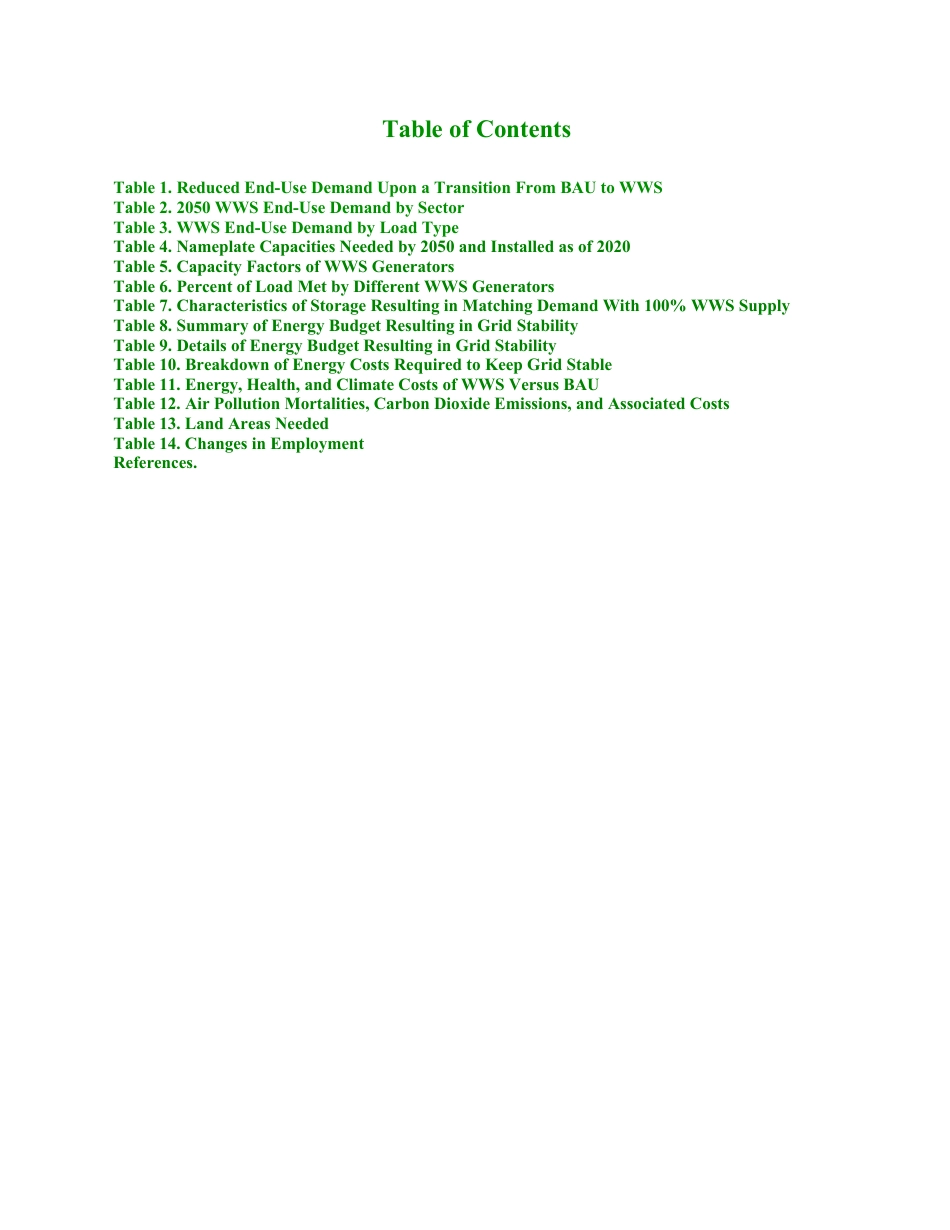A Solution to Global Warming, Air Pollution, and Energy Insecurity for 145 Countries By Mark Z. Jacobson, Stanford University, October 25, 2021 This infographic summarizes results from simulations that demonstrate the ability of 145 countries within 24 regions (11 multi-country regions--Africa, Central America, Central Asia, China region, Europe, Haiti-Dominican Republic, India region, Mideast, Russia-Georgia, South America, and Southeast Asia--and 13 individual countries-- Australia, Canada, Cuba, Iceland, Israel, Jamaica, Japan, Mauritius, New Zealand, Philippines, South Korea, Taiwan, and United States), to match all-purpose energy demand with wind-water-solar (WWS) electricity and heat supply, storage, and demand response continuously every 30 seconds for three years (2050-2052) in each region. All-purpose energy is for electricity, transport, buildings, industry, agriculture/forestry/fishing, and the military. Results are shown for the sum of all countries, which emit 99.7% of world anthropogenic CO2. The ideal transition timeline is 100% WWS by 2035; but results are shown for 2050-2052, after more population growth has occurred. WWS electricity-generating technologies include onshore and offshore wind, solar photovoltaics (PV) on rooftops and in power plants, concentrated solar power (CSP), geothermal, hydro, tidal, and wave power. WWS heat-generating technologies include geothermal and solar thermal. WWS storage includes electricity, heat, cold, and hydrogen storage. WWS equipment includes electric and hydrogen fuel cell vehicles, heat pumps, induction cooktops, arc furnaces, induction furnaces, resistance furnaces, lawnmowers, etc. No fossil fuels, nuclear, bioenergy, carbon capture, direct air capture, or blue hydrogen is in...



